Cracks in granite countertops are a common occurrence, particularly in countertops more than 10 years old. The crack starts out very small and grows over time. Sometimes cracking can extend to be more than 3 feet long! Granite, or rather any type of stone, can crack wherever the natural stone has been compromised from underneath. Let's take a deeper dive into why.





Where does granite usually crack and why?
Granite crack repairs are most commonly found either in front of or behind the kitchen sink. This is because there is a piece of rebar supporting the countertop underneath in those areas. When a countertop is fabricated, it is usually fabricated offsite. The hole for the sink is cut in the fabrication shop. In order to safely transport the cut piece of granite, the fabricator installs a piece of supportive rebar in the narrow areas on either side of the cut at the sink. Upon installation, this rebar is not removed, even though it serves no further purpose.
When the caulking around the sink or the backsplash of the granite countertop deteriorates, water seeps in behind the stone. Where water goes, trouble follows. Water then corrodes the exposed rebar, and the rod rusts. As the rod rusts, it expands; and as it expands, it pushes upwards and cracks the stone. Over time, as the oxidization of the rod continues, the rod becomes more rusted and blistered thus pushing more of the stone to crack. In this way, the crack starts out small and grows for as long as the rod stretches underneath the countertop.
So my granite is cracked, now what?
If your granite is cracked, it means that the caulking around your sink and backsplash has been severely deteriorated for quite some time. The longer you let it go, the bigger the crack and the more expensive the granite crack repair will be.
Clients often think that there is no way to repair such a scenario. However there are several options to performing granite crack repairs.
Of course many clients jump to the solution of demolishing the countertop and installing a new one. This is the most expensive and time consuming option. Costs include demo, time spent looking for a new slab, the cost of the new slab, the cost of the install, and the cost of the repair to the cabinets, backsplash, paint, floors and anything else that might need touchups after the work is done. Not to mention, once the countertops are removed, clients often want to change floors and cabinets too. One thing leads to another and before you know it a cracked granite countertop cost you a whole kitchen remodel!
The better option is to have the experienced technicians at CATA Stone Care & Restoration do your granite crack repair. No, it is not inexpensive, but it definitely beats demolishing the whole kitchen!
Injection Method
The least invasive option to repairing a granite crack is the injection method. With this granite crack repair, the technician injects a special two-part flowing epoxy into the crack to coat the corroded rod as much as possible. This technique prevents the road from oxidizing further. The technician then fills the crack with more epoxy and color matches it to the stone as best as possible. He then grinds the granite flat and polishes the area so that the shine of the epoxy matches the shine of the granite countertop.
He then removes and replaces the caulking around the perimeter of the sink to ensure that no moisture enters behind the stone. If necessary, he will also remove and replace the caulking at the backsplash.
This technique can be used on granite that has cracked in front of the sink, but it is more commonly used when granite is cracked behind the sink near the backsplash. Since it is the less invasive option, it is preferably used when working near the backsplash so that the backsplash does not become dislodged.
Clients find that this granite crack repair works well. However because the source of the cracking has not been removed, there is no guarantee that further cracking will not occur sometime in the future. For a more fail safe option, we recommend the extraction method.
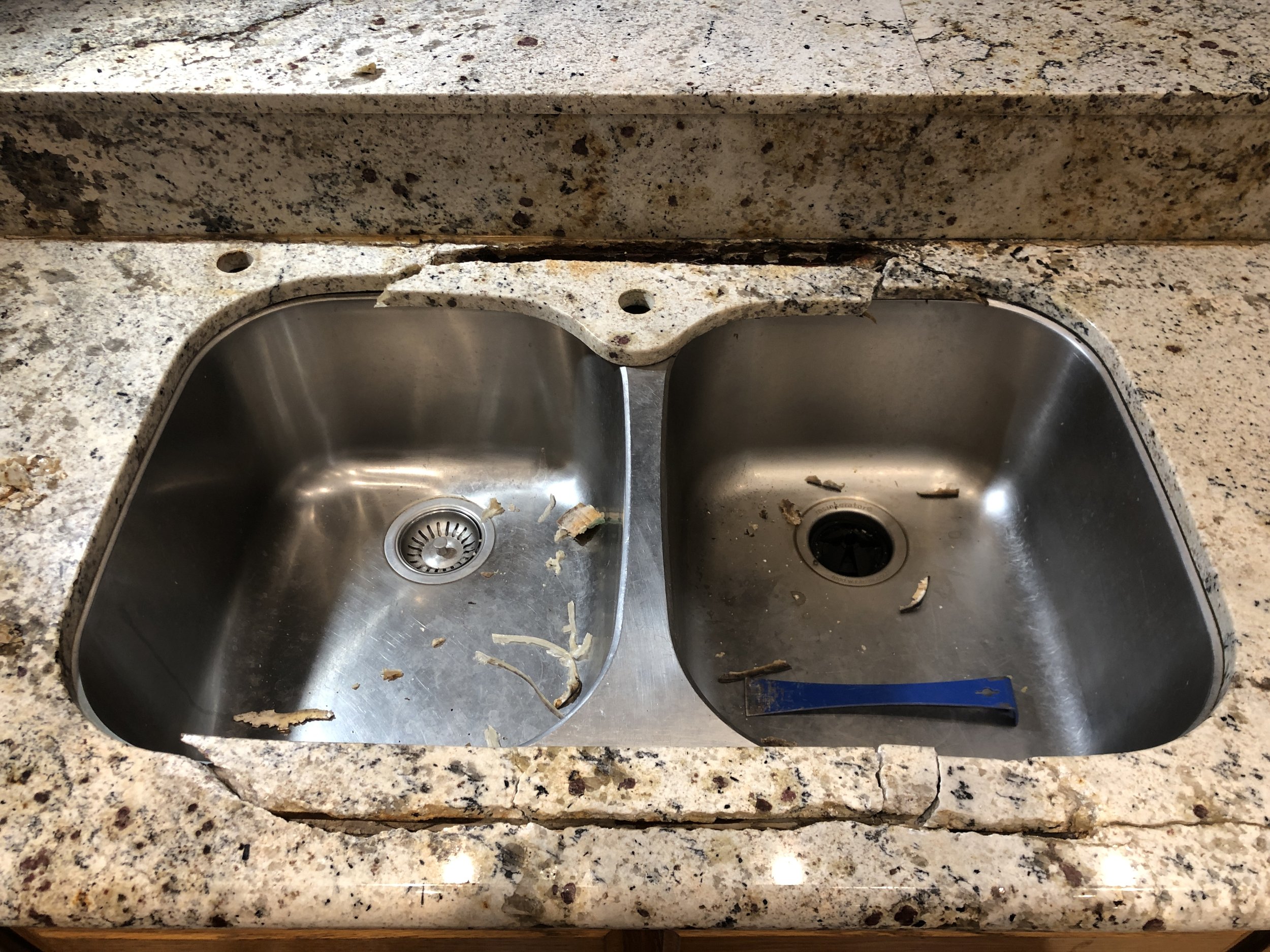
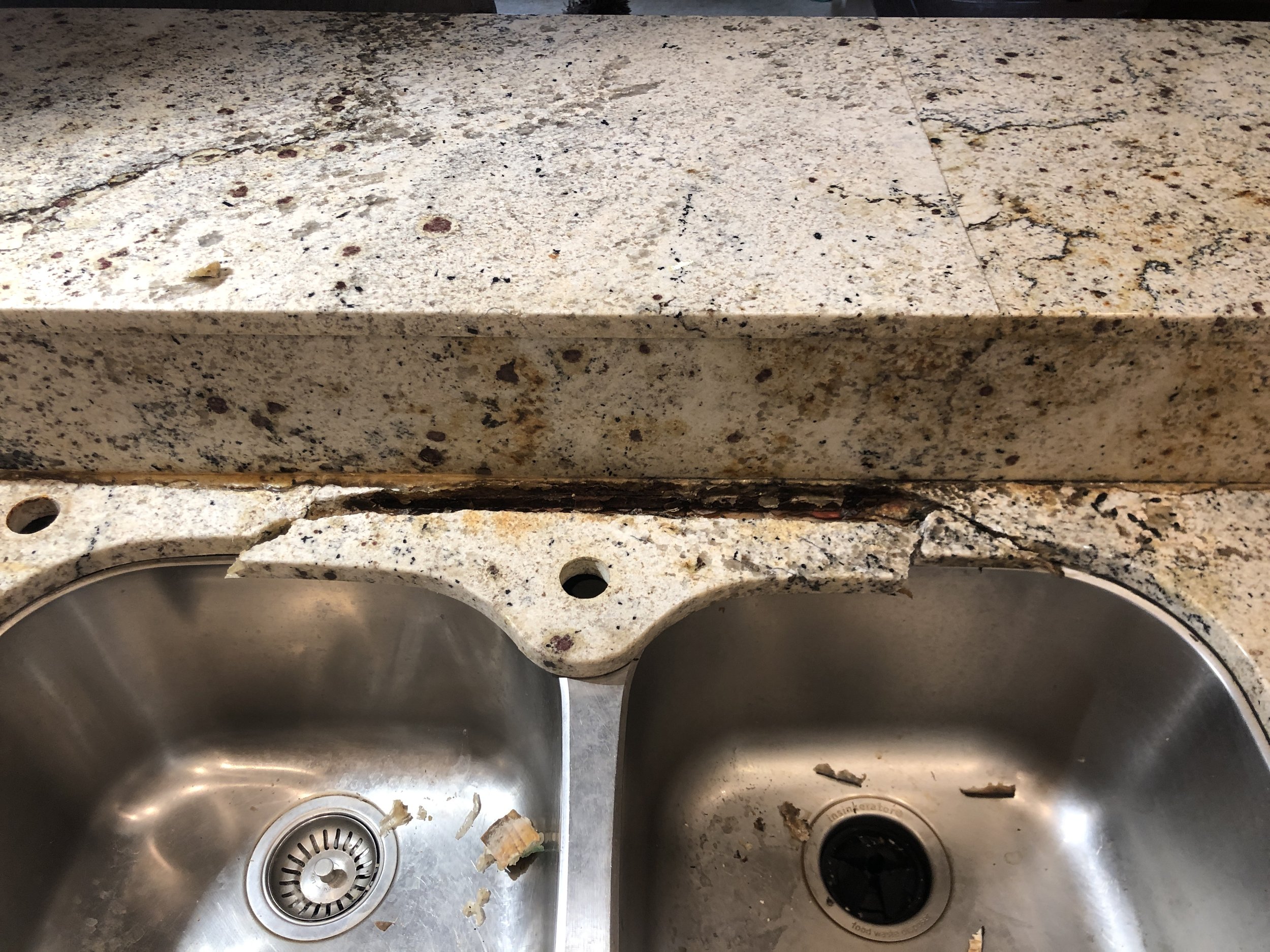
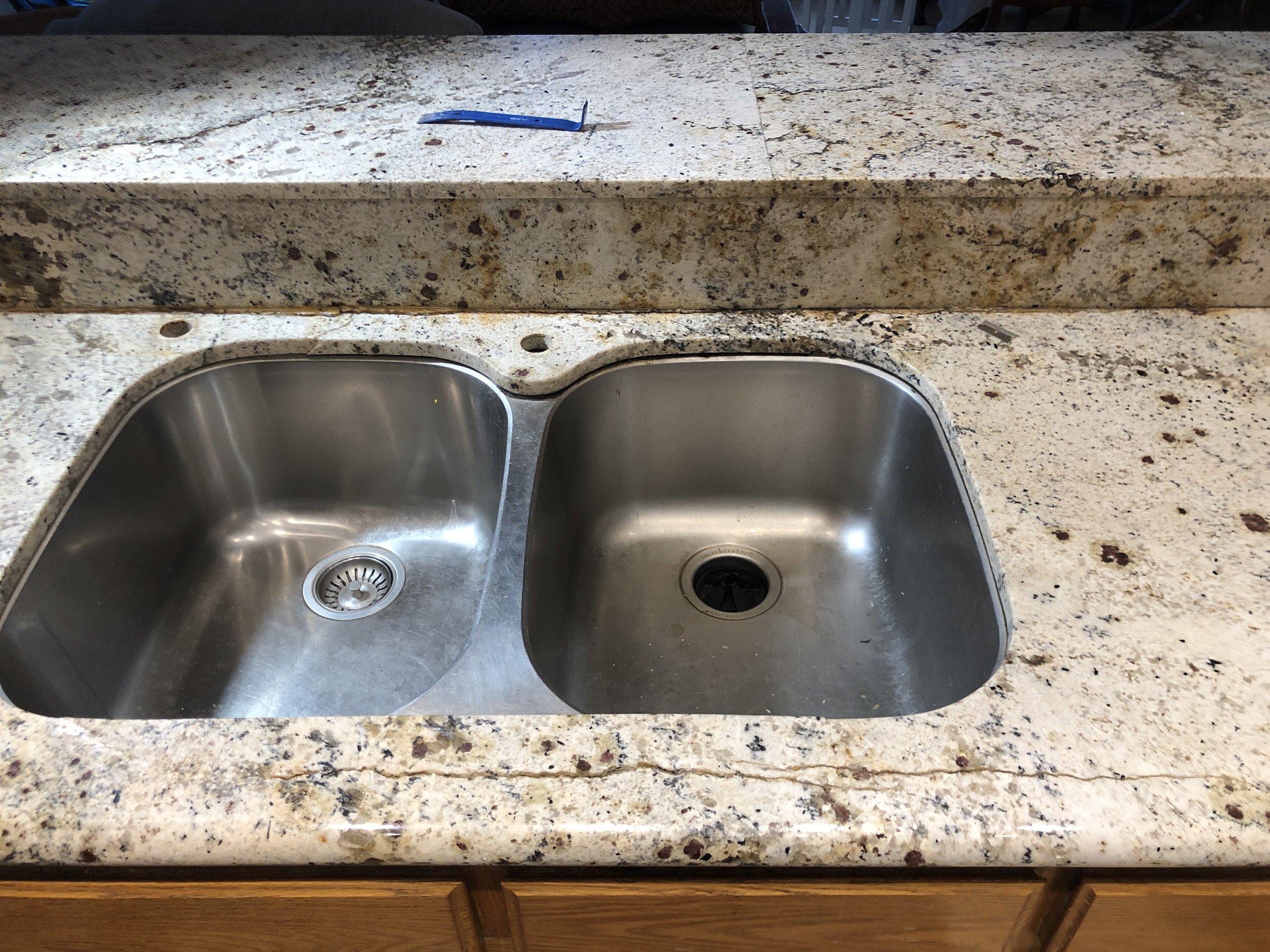
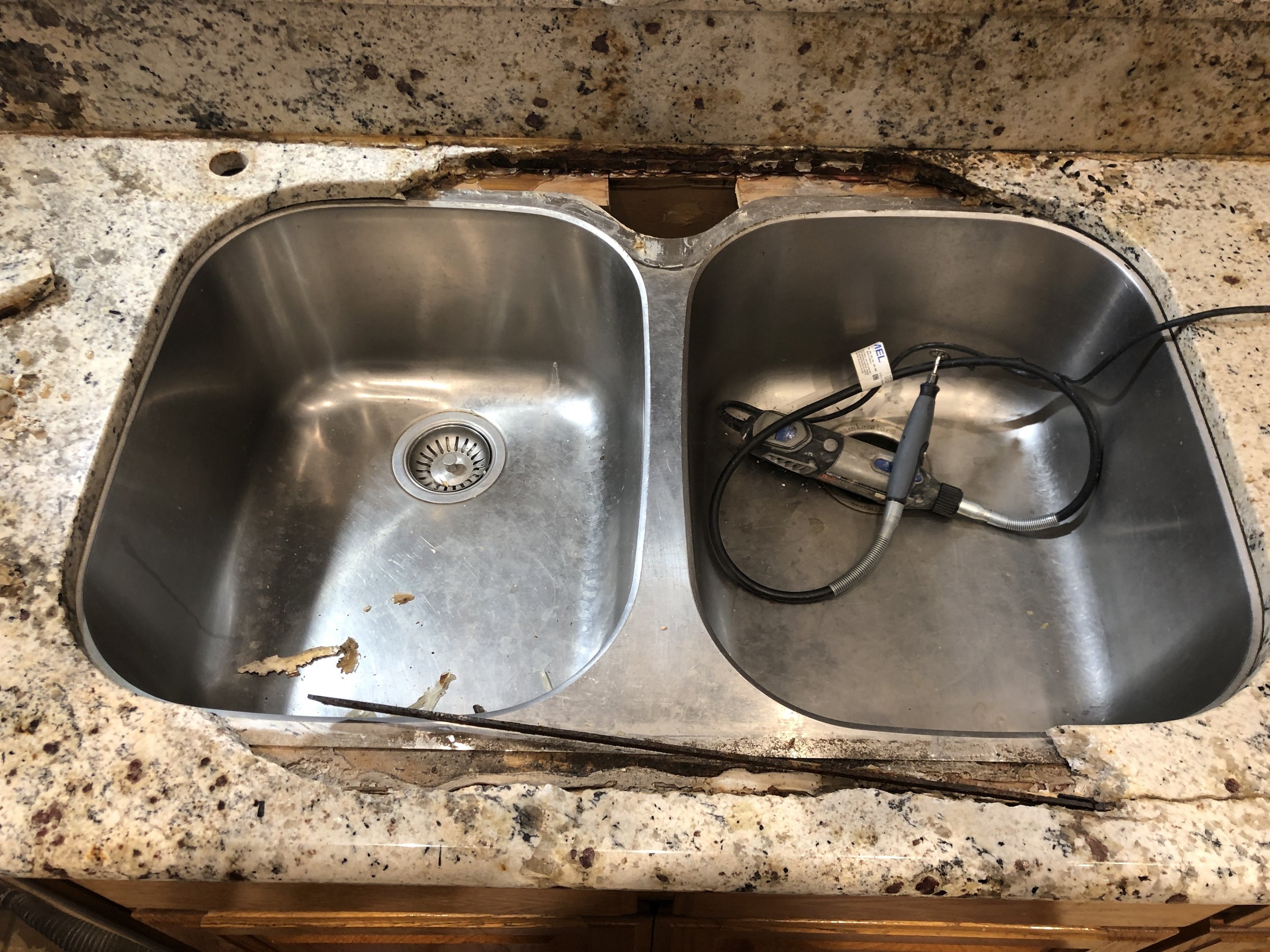
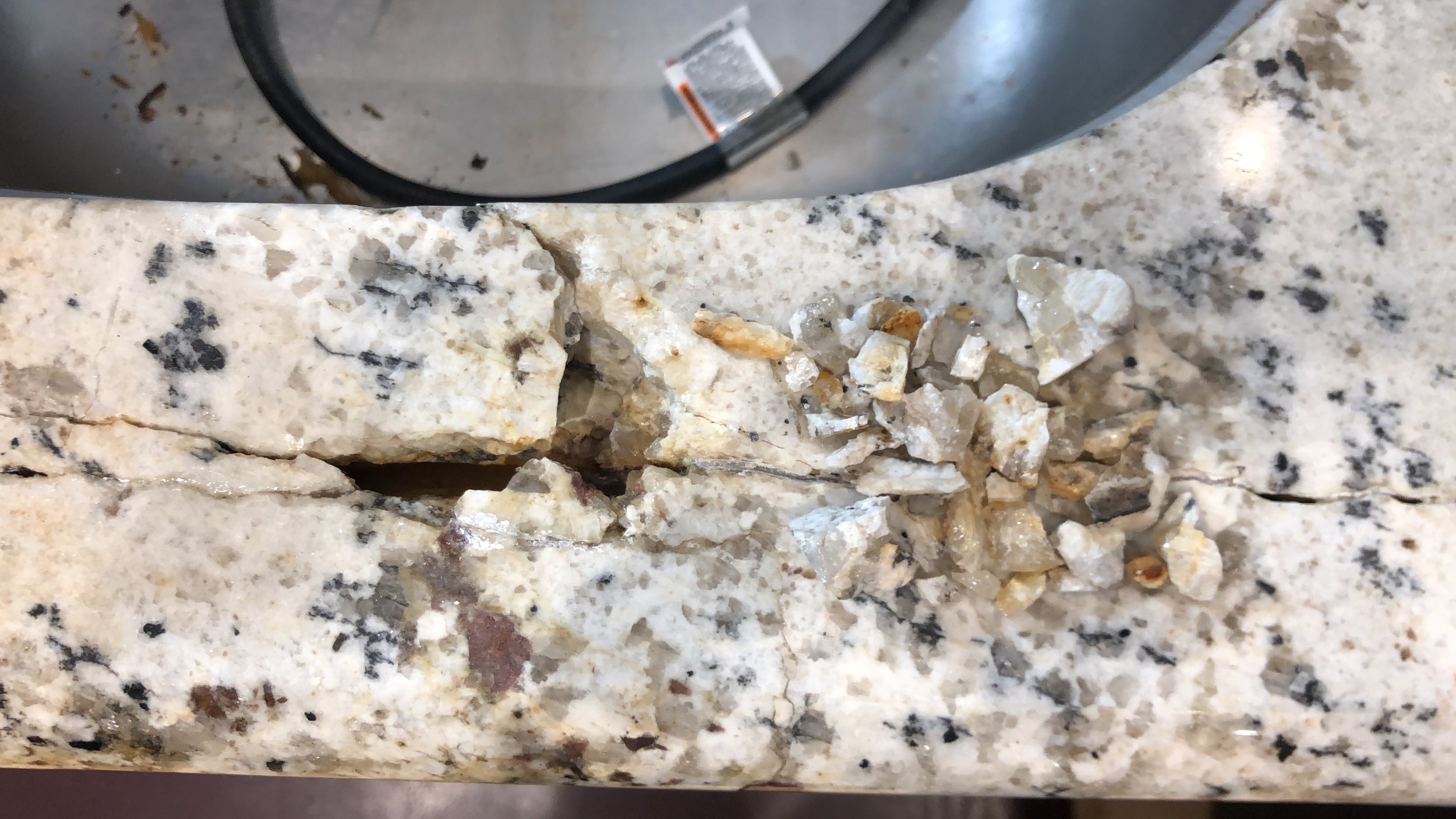
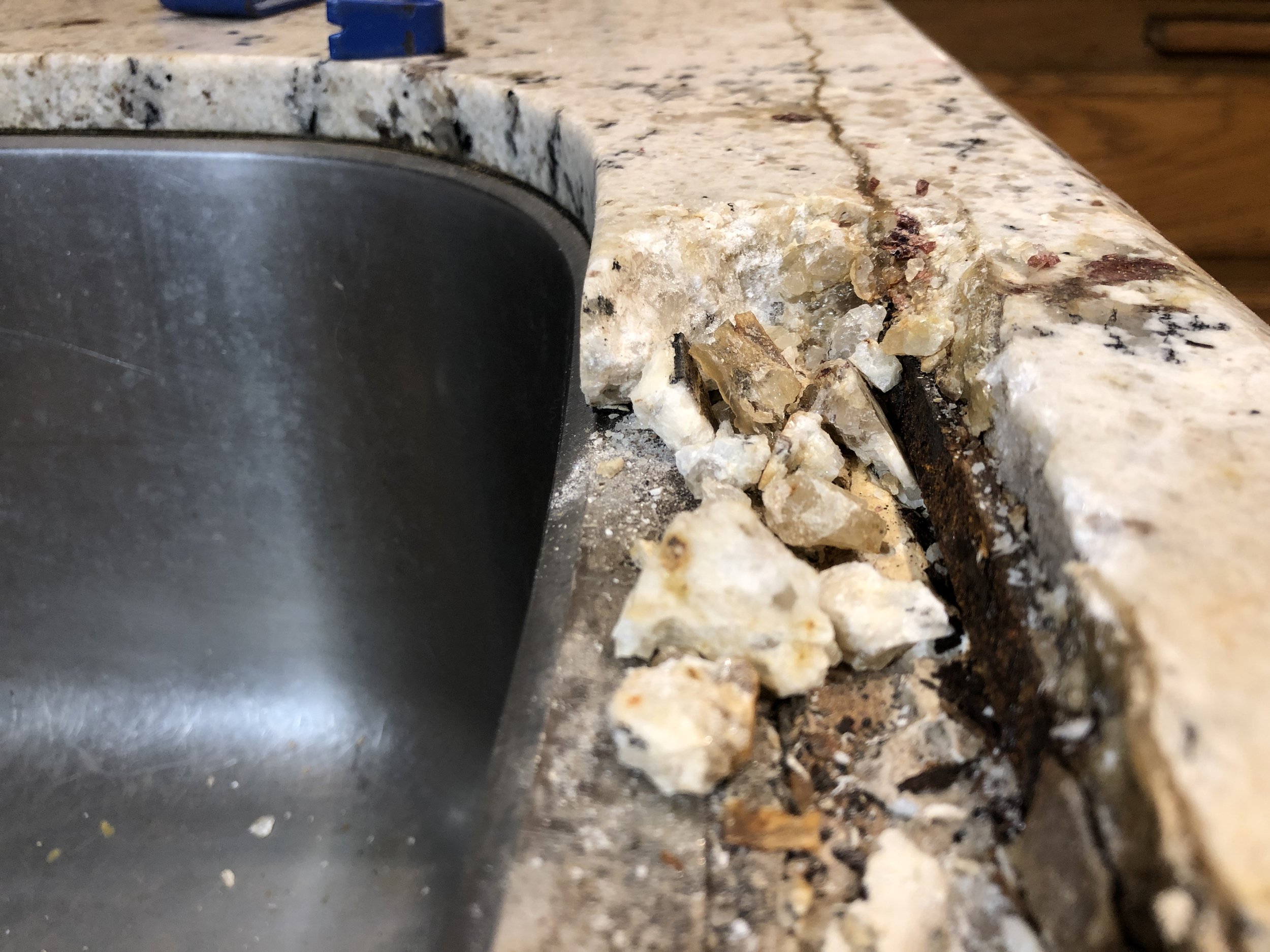
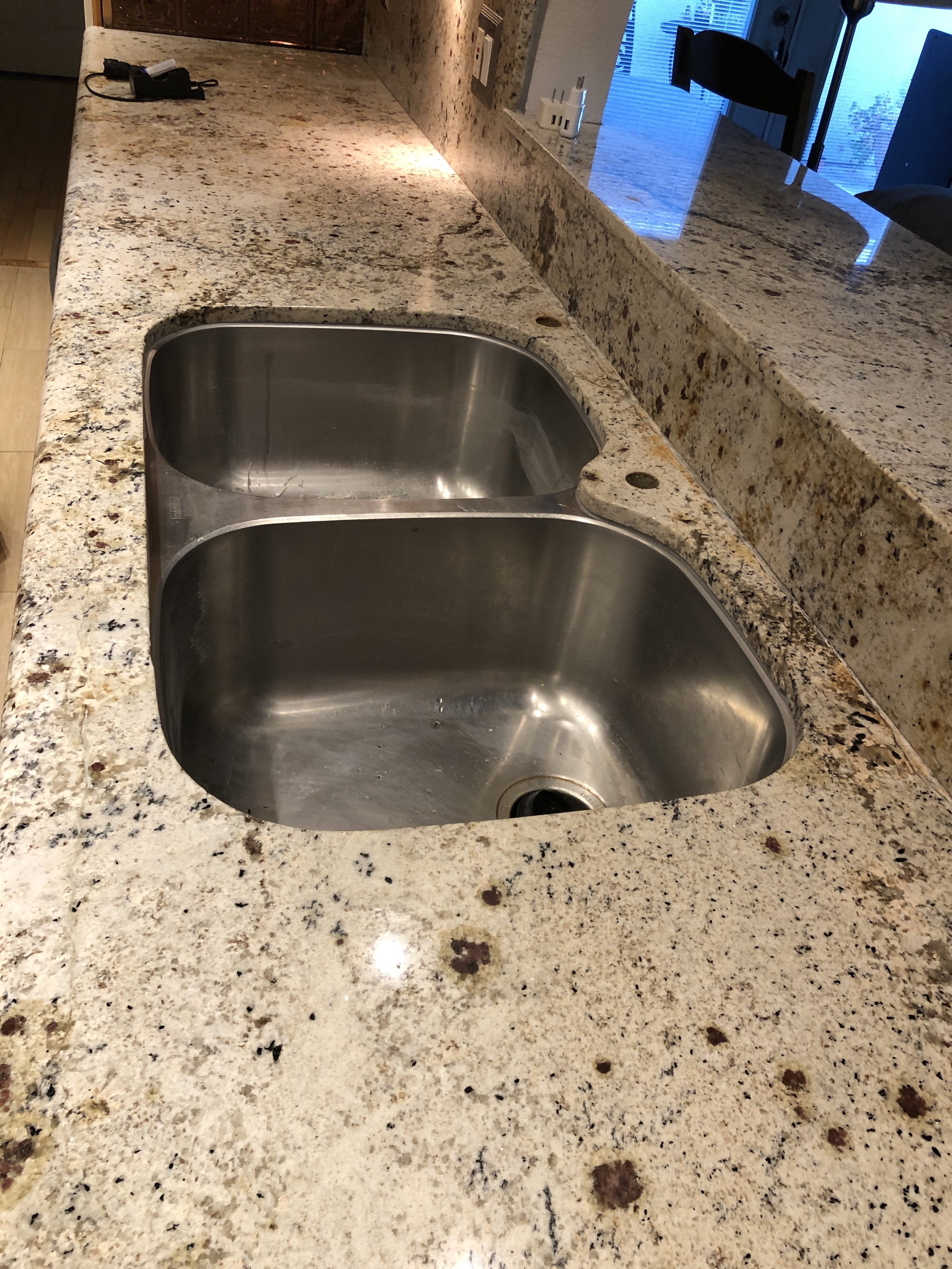
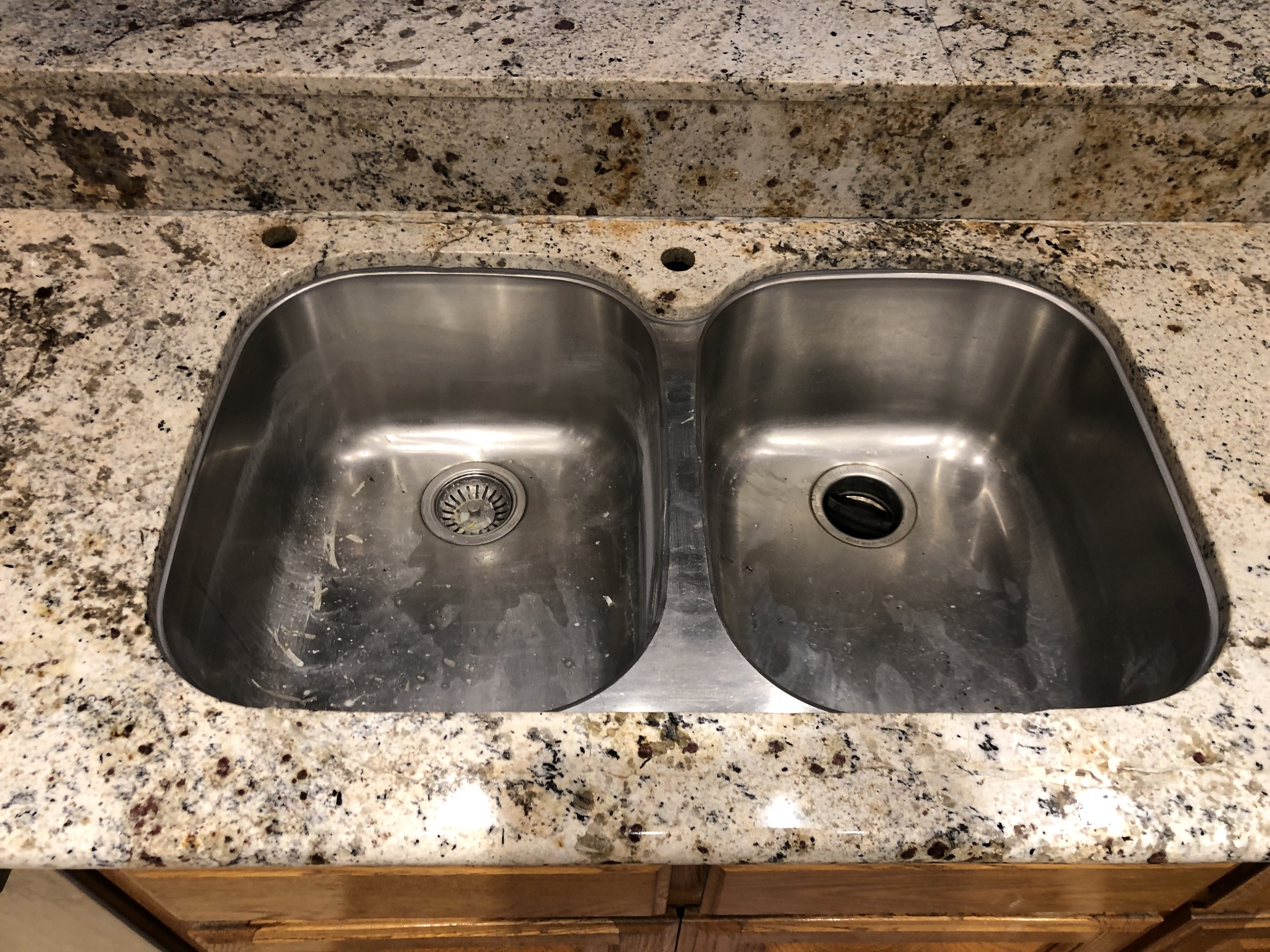
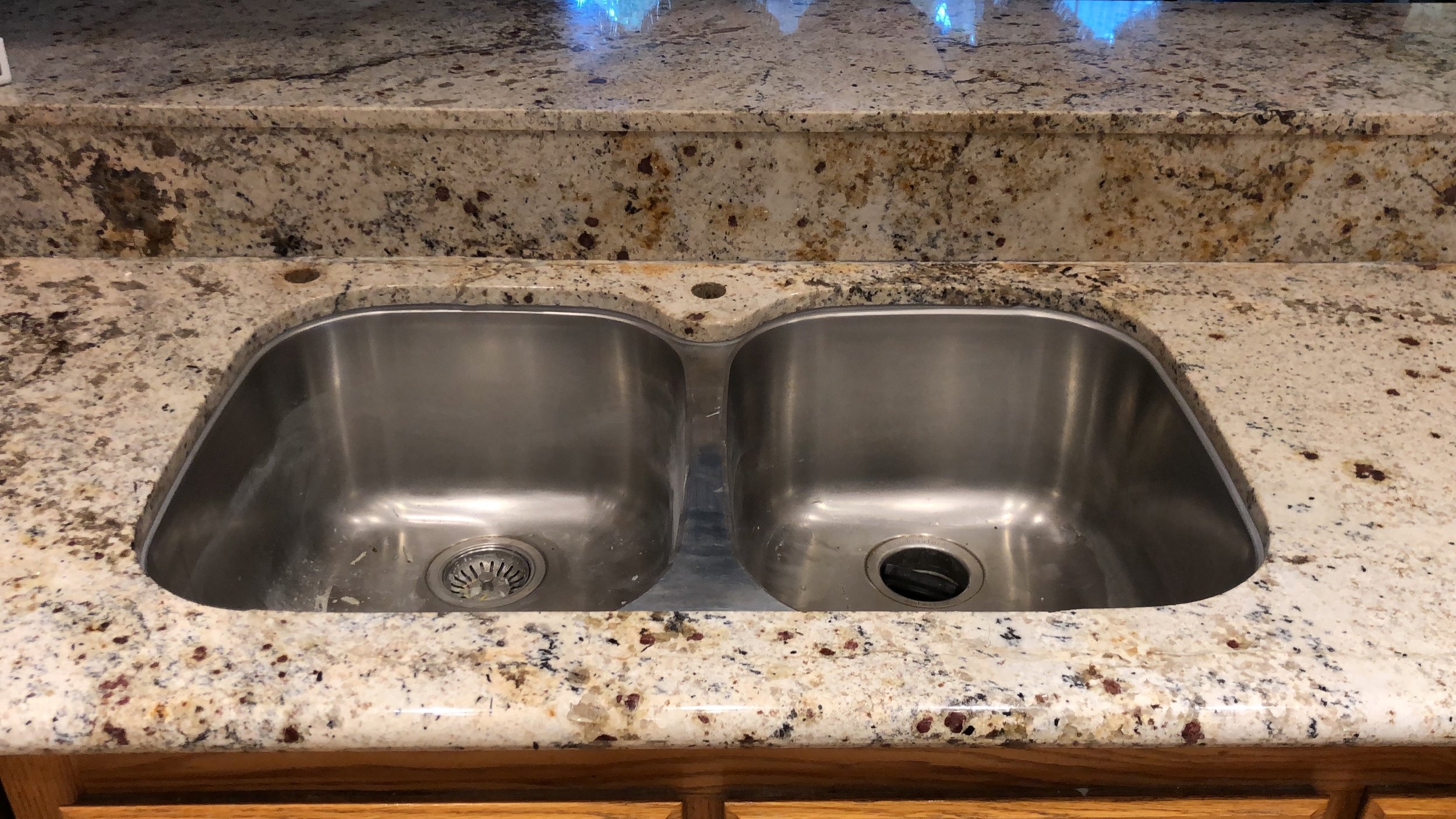
Extraction Method
The extraction method is the best way to guarantee that your granite will not crack after it is repaired. With this method, the source of the cracking is completely removed. Very few stone care technicians know this technique and even fewer have mastered it.
The technician either cuts or breaks apart the granite countertop at the cracked area. He then proceeds to cut the corroded rod out from underneath the countertop completely. Once the rod is removed, the granite pieces are glued back together using a special two-part epoxy specifically made for stone. The technician color-matches to the existing stone as best as possible. Using clamps and other tools, the pieces are glued back into place. The technician then grinds the granite flat and to the desired finish.
Lastly, he removes and replaces the caulking around the perimeter of the sink to ensure that no moisture enters behind the stone. And again if necessary, he will also remove and replace the caulking at the backsplash.
Since the source of the granite crack has been completely removed using this technique, CATA Stone Care & Restoration warrantees the granite crack repair for one year, provided that the caulking around the sink and the backsplash remains intact.
This technique can be used with either granite that has cracked in front of the sink or behind the sink.
Conclusion
Now that you know why granite countertops can crack, you can keep an eye out for any that might be forming in your kitchen. Look for caulking that has deteriorated around your sink or backsplash, and look for any cracks (even hairline cracks) that may have formed.
Granite cracks may not be limited to kitchen countertops but you may also find them in bathrooms or showers— Really any place in which there might be a corroded ride or a piece of metal underneath.
Call the technicians at CATA Stone Care & Restoration to take the best care of your countertops, perform your granite crack repairs and ensure that your surfaces will last you for years to come.


